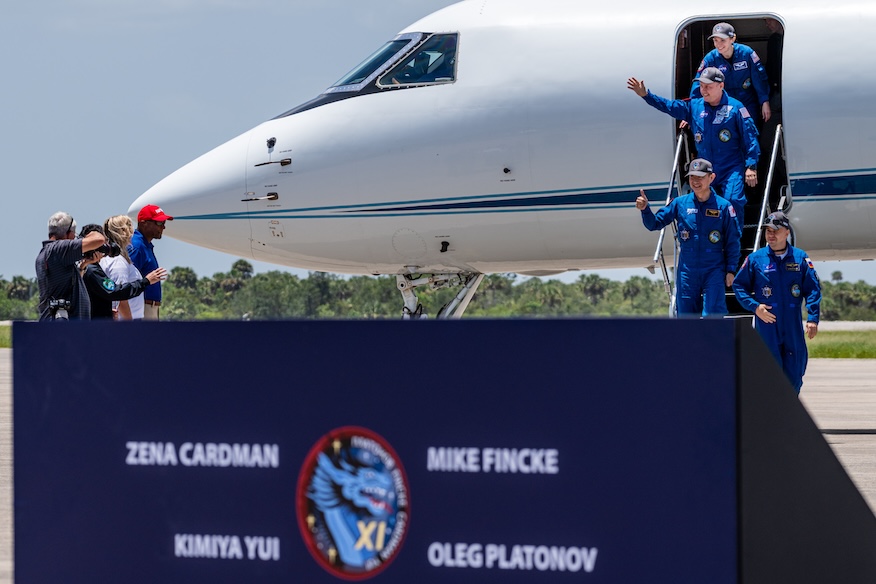
SpaceX is preparing for a mid-afternoon demonstration on Monday to verify the health of the Falcon 9 rocket that will carry four humans up to the International Space Station this week. The three astronauts and one cosmonaut of the mission, dubbed Crew-11, will carry out a long-duration stay onboard the orbiting outpost with liftoff planned for Thursday, July 31.
The launch company will fuel its 70-meter-tall rocket at Launch Complex 39A at NASA’s Kennedy Space Center before igniting the nine Merlin engines for a roughly 10-second-long burn. The operation is referred to as a static fire test, since the hold down clamps holding the rocket in place aren’t planned to release ahead of engine ignition as they will on launch day.
Engine ignition is expected at 3:09 p.m. EDT (1909 UTC), three hours after the conclusion of a dry dress rehearsal in which the astronauts board the Dragon with the Falcon 9 un-fueled.
Spaceflight Now will have live coverage of the static fire test beginning about 30 minutes prior to ignition.
SpaceX is using Falcon 9 first stage booster serial number B1094 for the Crew-11 mission. The rocket is flying for a third time, having previously launched Starlink 12-10 on April 29 followed by Axiom Mission 4 on June 25.
The fully integrated rocket rolled out of the hangar at LC-39A around midnight heading into Sunday morning. The rocket was brought into the launch position shortly before 10 a.m. EDT (1400 UTC) Sunday and the crew access arm swung out to position itself alongside the Crew Dragon Endeavour.
Timelapse of Dragon and Falcon 9 going vertical at pad 39A pic.twitter.com/OjSiqO1yya
— SpaceX (@SpaceX) July 27, 2025
Mission commander and NASA astronaut Zena Cardman and her three crew mates arrived at KSC on Saturday afternoon in the midst of their planned quarantine period, which is standard for missions to the ISS. She and Oleg Platonov, a Roscosmos cosmonaut and one of two mission specialists, will be flying to space for the first time.
NASA astronaut and pilot Mike Fincke is returning to space for a fourth time. Japanese Aerospace Exploration Agency (JAXA) astronaut and mission specialist Kimiya Yui is making his second trip to the ISS.
The crew will live and work onboard the station for at least six months. NASA and its international partners are considering extending the nominal mission to eight months to more closely align with the shifting timelines being put in place by Russia with its Soyuz missions.
A final decision on the mission length isn’t expected until about a month or so after Crew-11 docks with the ISS.

source: spaceflightnow.com